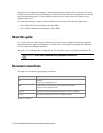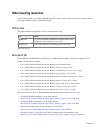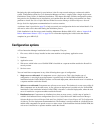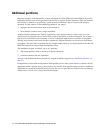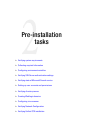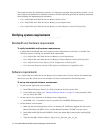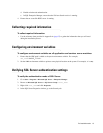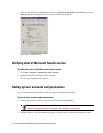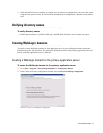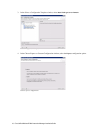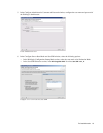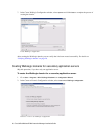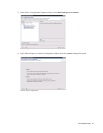
14 Cisco Unified Web and E-Mail Interaction Manager Installation Guide
This chapter describes pre-installation procedures. It is important to perform these procedures carefully. As you
need to prepare the installation environment in advance, read this installation guide and the following documents
before planning and implementing the installation:
Cisco Unified Web and E-Mail Interaction Manager Release Notes
Cisco Unified Web and E-Mail Interaction Manager System Requirements
Cisco Unified Web and E-Mail Interaction Manager Solutions Reference Network Design Guide
Verifying system requirements
Bandwidth and hardware requirements
To verify bandwidth and hardware requirements:
Confirm that the bandwidth and servers required for the configuration of your choice is available. The
following resources will help you determine these requirements:
Cisco Unified Web and E-Mail Interaction Manager System Requirements
Cisco Unified Web and E-Mail Interaction Manager Solutions Reference Network Design Guide
Cisco Unified Contact Center Express (CCX) Configuration & Ordering Tool
Cisco Customer Response Solutions (CRS) Software and Hardware Compatibility Guide
Software requirements
Cisco Unified Web and E-Mail Interaction Manager System Requirements lists the software environment that
must be set up on the various server-class machines. Create the environment in the following order.
To set up the required software environment:
1. On the web and application server machines:
a. Install BEA® WebLogic Server™ 8.1 SP 6 (included on the Cisco product CD).
b. Create WebLogic domains (see “Creating WebLogic domains” on page 17 for the procedure); make
sure you choose Sun JDK.
2. On the services server machines in distributed-server configurations:
Install JDK 1.4.2_11 (included on the Cisco product CD with BEA® WebLogic Server).
3. On the database server machine:
a. Make sure that the following three services are running: NT LM Security Support Provider service,
Remote Procedure Call (RPC) service, and the Remote Procedure Call (RPC) Locator service.
b. Install Microsoft® SQL Server® 2000 SP 4. Select the default SQL instance while installing SQL
Server.
c. Verify that the SQL collation setting is:
SQL_Latin1_General_CP1_CI_AS





